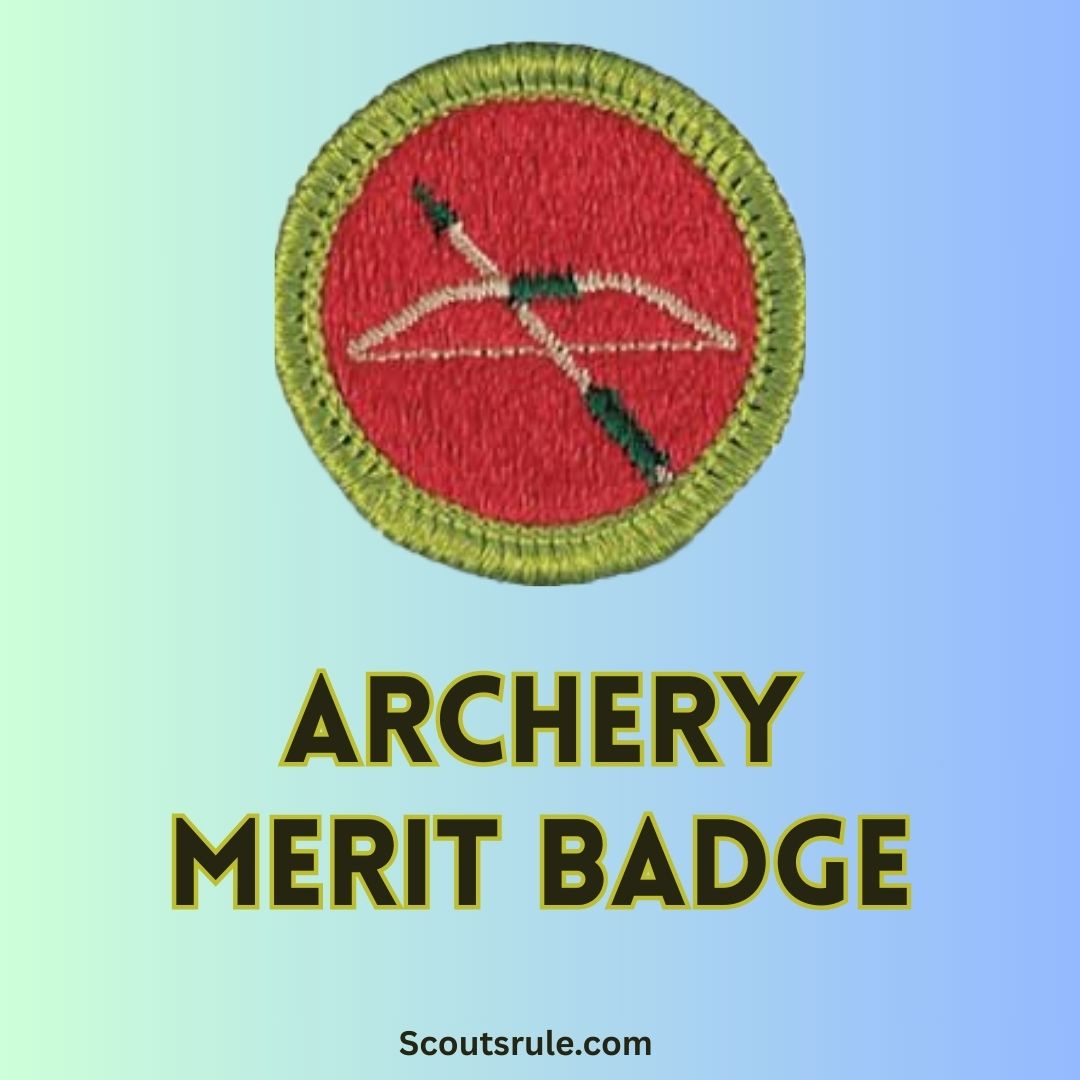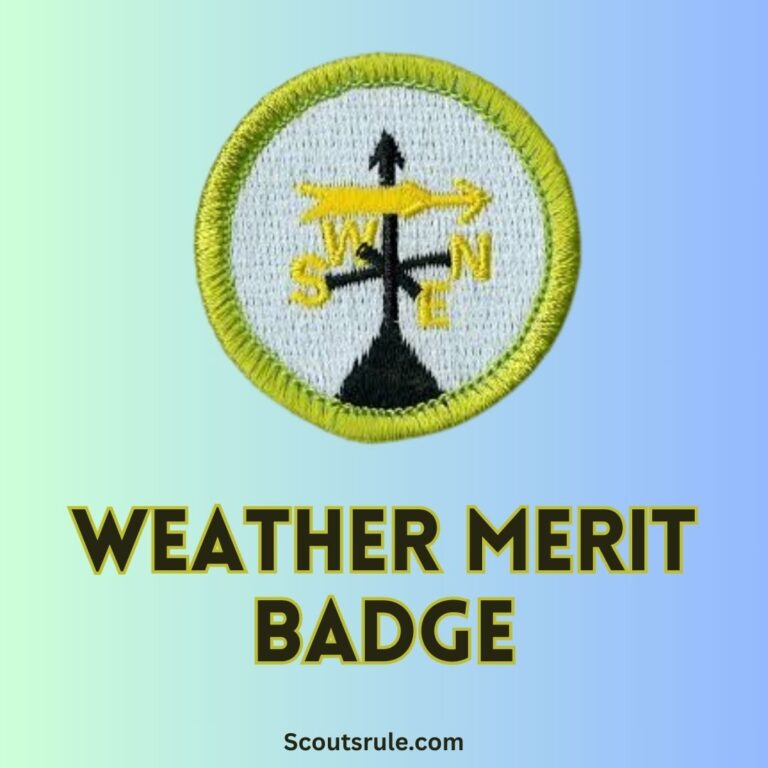
The Archery Merit Badge is an exciting opportunity for Scouts to develop their skills in using a bow and arrow, learn about archery equipment, and understand the importance of safety on the range. By earning this badge, Scouts will gain confidence, improve their concentration, and explore the history and traditions of archery.
This guide will walk you through each requirement, offering tips, examples, and insights to help you succeed. Let’s take aim and dive into the details!
Post Contents
1. Range Safety and Laws
Requirement 1: Understand Range Safety Rules and Laws
- Task: Do the following:
- Explain the five range safety rules.
- Explain the four whistle commands used on the range.
- Explain how to safely remove arrows from the target and return them to your quiver.
- Tell about your local and state laws for owning and using archery equipment.
Key Points:
- Range Safety Rules:
- Always point the bow and arrow downrange.
- Never nock an arrow until instructed.
- Wait for the whistle command before shooting.
- Do not cross the shooting line until the range is clear.
- Wear appropriate safety gear, such as arm guards and finger tabs.
- Whistle Commands:
- One whistle: Shoot.
- Two whistles: Retrieve arrows.
- Three whistles: Stop shooting and clear the range.
- Four or more whistles: Emergency—stop immediately.
- Arrow Removal: Approach the target carefully, place one hand on the target to stabilize it, and pull the arrow straight out to avoid damaging it.
- Local and State Laws: Research laws regarding archery equipment ownership, use, and transportation in your area. Discuss these laws with your counselor.
2. Arrows and Their Components
Requirement 2: Learn About Arrows
- Task: Do the following:
- Name and point out the parts of an arrow.
- Describe three or more different types of arrows.
- Name the four principal materials for making arrow shafts.
- Do ONE of the following:
- Make a complete arrow from a bare shaft using appropriate equipment.
- Demonstrate arrow repair by inspecting shafts and replacing vanes, points, and nocks.
- Explain how to properly care for and store arrows.
Key Points:
- Parts of an Arrow:
- Shaft: The main body of the arrow.
- Fletching: The feathers or vanes that stabilize the arrow in flight.
- Nock: The notch that attaches the arrow to the bowstring.
- Point: The tip of the arrow, which can vary depending on its use.
- Types of Arrows:
- Target arrows: Lightweight and designed for accuracy.
- Hunting arrows: Heavier and equipped with broadheads for penetration.
- Field arrows: Versatile and used for general practice.
- Materials for Arrow Shafts:
- Wood
- Aluminum
- Carbon fiber
- Fiberglass
- Arrow Care: Store arrows in a quiver or case to prevent damage. Inspect them regularly for cracks, bent shafts, or loose fletching.
3. Archery Equipment and Terminology
Requirement 3: Understand Archery Equipment
- Task: Do the following:
- Explain the proper use, care, and storage of tabs, arm guards, shooting gloves, and quivers.
- Explain the following terms: draw length, draw weight, mechanical release, and barebow.
Key Points:
- Equipment Use and Care:
- Tabs and shooting gloves protect your fingers from the bowstring.
- Arm guards prevent injuries from the bowstring snapping against your arm.
- Quivers store and organize arrows for easy access.
- Terminology:
- Draw Length: The distance the bowstring is pulled back.
- Draw Weight: The amount of force required to pull the bowstring.
- Mechanical Release: A device that helps release the bowstring smoothly.
- Barebow: A bow without sights or stabilizers, used for traditional archery.
4. Archery Competitions
Requirement 4: Learn About Archery Competitions
- Task: Do the following:
- Explain the difference between an end and a round.
- Describe the differences among field, target, and 3-D archery.
- Explain how the five-color World Archery Federation target is scored.
- Explain how the National Field Archery Association (NFAA) black-and-white field targets and blue indoor targets are scored.
Key Points:
- End vs. Round:
- An end is a set of arrows shot before retrieving them.
- A round is a series of ends that make up a competition.
- Types of Archery:
- Field Archery: Shooting at targets placed at varying distances in outdoor settings.
- Target Archery: Shooting at stationary targets at fixed distances.
- 3-D Archery: Shooting at life-sized animal models for simulated hunting practice.
- Scoring:
- World Archery Federation targets use five colors (gold, red, blue, black, white) with point values ranging from 10 to 1.
- NFAA targets use black-and-white rings for field archery and blue rings for indoor archery, with scoring based on accuracy.
5. Archery Skills
Requirement 5: Demonstrate Archery Skills
- Task: Do ONE of the following options:
- Option A: Using a recurve bow or longbow:
- Name and point to the parts of the bow.
- Explain how to care for and store the bow.
- Demonstrate USA Archery’s “Steps of Shooting.”
- Demonstrate the proper way to string the bow.
- Locate and mark the nocking point on the bowstring.
- Shoot a round and achieve a minimum score.
- Option B: Using a compound bow:
- Name and point to the parts of the bow.
- Explain how to care for and store the bow.
- Demonstrate USA Archery’s “Steps of Shooting.”
- Demonstrate the proper way to string the bow.
- Locate and mark the nocking point on the bowstring.
- Shoot a round and achieve a minimum score.
Tips:
- Practice regularly to improve your accuracy and consistency.
- Follow safety guidelines and use proper form to avoid injuries.
- Work with your counselor to ensure you meet the scoring requirements.
Tips for Success
- Start Early: Some requirements involve hands-on activities, so begin as soon as possible.
- Practice Regularly: Spend time on the range to build your skills and confidence.
- Stay Safe: Always follow range safety rules and use protective equipment.
- Ask Questions: Don’t hesitate to seek guidance from your counselor or experienced archers.
- Document Your Progress: Keep detailed notes and photos of your activities to share with your counselor.
Conclusion
The Archery Merit Badge is a rewarding experience that combines skill development, safety awareness, and an appreciation for the history and traditions of archery. By completing the requirements, you’ll gain valuable knowledge and skills that can be applied to other areas of Scouting and life. Enjoy the journey, and let your passion for archery inspire you to aim high!
Archery Merit Badge FAQ’s
Here’s a concise FAQ guide for the Archery Merit Badge to help Scouts navigate its requirements and objectives:
General Questions
Q: What is the Archery Merit Badge about?
A: This badge teaches Scouts the fundamentals of archery, including safety, equipment care, and shooting techniques. It combines physical skill with focus and precision, making it a rewarding experience.
Q: Is this badge required for Eagle Scout?
A: No, the Archery Merit Badge is not required for Eagle Scout, but it is a popular elective badge.
Q: How long does it take to complete this badge?
A: The time required varies depending on your access to a range and equipment. Most Scouts complete it within a few weeks to a couple of months with regular practice.
Safety and Range Rules
Q: What are the five range safety rules?
- Always point the bow and arrow downrange.
- Never nock an arrow until instructed.
- Wait for the whistle command before shooting.
- Do not cross the shooting line until the range is clear.
- Wear appropriate safety gear, such as arm guards and finger tabs.
Q: What do the whistle commands mean?
- One whistle: Shoot.
- Two whistles: Retrieve arrows.
- Three whistles: Stop shooting and clear the range.
- Four or more whistles: Emergency—stop immediately.
Equipment and Skills
Q: What are the parts of an arrow?
A: The main parts are the shaft, fletching (feathers or vanes), nock (notch for the bowstring), and point (tip of the arrow).
Q: What types of bows can I use for this badge?
A: You can use a recurve bow, longbow, or compound bow, depending on the option you choose for the skills demonstration.
Q: What is the “Steps of Shooting”?
A: This is a sequence of steps taught by USA Archery to ensure proper form and accuracy. It includes stance, nocking the arrow, drawing, aiming, releasing, and follow-through.
Competitions and Scoring
Q: What is the difference between an end and a round?
A:
- An end is a set of arrows shot before retrieving them.
- A round is a series of ends that make up a competition.
Q: How is scoring done on a five-color target?
A: The target has five colored rings (gold, red, blue, black, white), with point values ranging from 10 (center) to 1 (outermost ring).
Tips for Success
- Practice Regularly: Spend time on the range to improve your accuracy and consistency.
- Stay Safe: Always follow range safety rules and use protective equipment.
- Ask for Guidance: Work closely with your counselor or an experienced archer to refine your skills.
- Document Your Progress: Keep notes and photos of your activities to share with your counselor.
The Archery Merit Badge is a fun and challenging way to develop focus, patience, and precision. By mastering the skills and understanding the safety rules, you’ll gain confidence and a deeper appreciation for the sport of archery. Happy shooting!

Hi, Robin here, A former lead Scout and here I share my inspiring stories about USA Scouts, leadership, adventure, how to guides and more.






